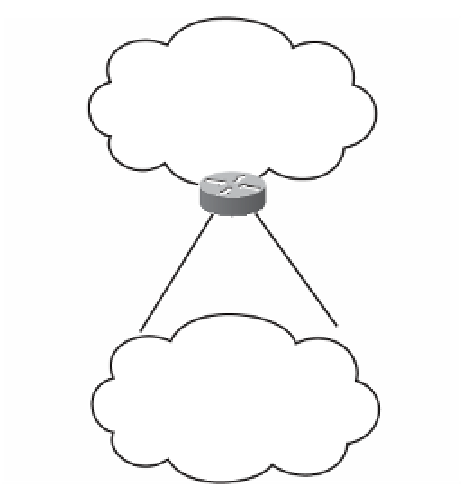Information Technology Reference
In-Depth Information
Consider the diagram shown in Figure 11-14. With all attributes considered equal, con-
sider that Router C selects Router A as its best path into autonomous system 100 based on
Router A's lower router ID (RID). If Router A is configured with a MED of 200, that will
make Router C select Router B as the best path to autonomous system 100. No additional
configuration is required on Router B because the default MED is 0.
AS 200
Router C
2.1.1.1
Router A
1.1.1.1
MED = 200
Router B
1.2.1.1
MED = 0
AS 100
Figure 11-14
MED Attribute
Community Attribute
Although it is not an attribute used in the routing-decision process, the community attrib-
ute groups routes and applies policies or decisions (accept, prefer) to those routes. It is a
group of destinations that share some common property. The community attribute is an
optional transitive attribute of variable length.
Atomic Aggregate and Aggregator Attributes
The atomic aggregate attribute informs BGP peers that the local router used a less specific
(aggregated) route to a destination without using a more specific route.
If a BGP router selects a less-specific route when a more-specific route is available, it must
attach the atomic aggregate attribute when propagating the route. The atomic aggregate
attribute lets the BGP peers know that the BGP router used an aggregated route. A more-
specific route must be in the advertising router's BGP table before it propagates an aggre-
gate route.
When the atomic aggregate attribute is used, the BGP speaker has the option to send the
aggregator attribute. The aggregator attribute includes the ASN and the IP address of the
router that originated the aggregated route. In Cisco routers, the IP address used is the
discretionary attribute, and aggregator is an optional transitive attribute.


